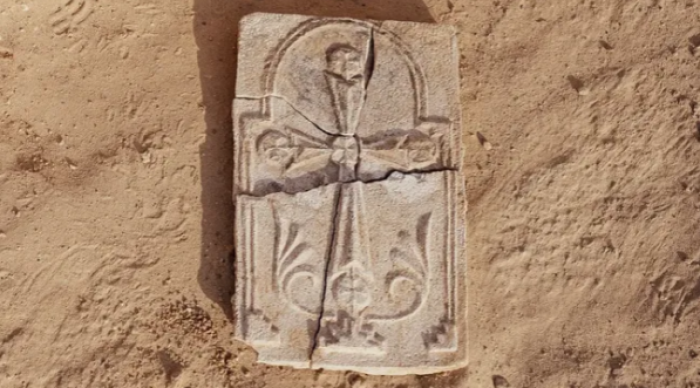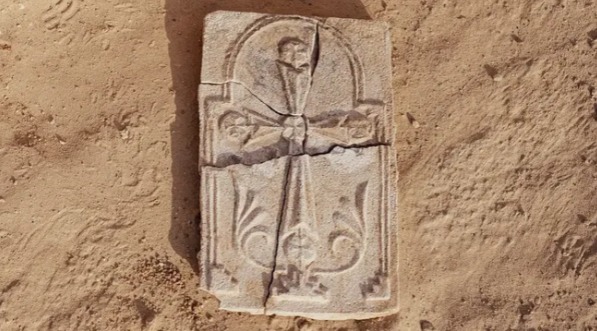
A remarkable archaeological discovery on Sir Bani Yas Island in Abu Dhabi is transforming historians’ understanding of how Christianity spread during the seventh and eighth centuries.
Researchers uncovered a 1,400-year-old plaster plaque depicting a cross within the ruins of a church and monastery. The cross features a stepped pyramid reminiscent of Golgotha — the site believed to be where Jesus was crucified — with foliage sprouting from its base.
The find suggests a thriving Christian settlement existed in the region at a time when Islam was rapidly expanding and pagan traditions still persisted. Contrary to the long-held assumption that Christianity was in decline, evidence indicates that believers here were not only present but flourishing, according to The National.
Maria Gajewska, the chief archaeologist on site, explained: “Every element of the cross incorporates regional motifs. It tells us that Christianity in this region was not only present but also flourished, adapting visually to its local context. We had settlements of Christians that were not just existing but were clearly thriving.”
The cross, which measures about 27 cm by 17 cm and is less than 2 cm thick, is thought to have served as a sacred object, possibly mounted on a wall before which worshipers prayed.
Other finds included pottery, glass vessels and a small sea-green bottle that might have contained oil or rosewater.
Hager Al Menhali, an Emirati archaeologist with the Department of Culture and Tourism, said her attention was caught by “a distinct fingerprint on the back” of the plaque, possibly left by its maker more than a millennium ago.
Mohamed Khalifa Al Mubarak, chairman of the Department of Culture and Tourism, described the discovery as “a powerful testament to the UAE’s profound and enduring values of coexistence and cultural openness,” noting that it highlights a history of peaceful religious diversity in the region.
Archaeological evidence suggests that the community on Sir Bani Yas was linked to the Church of the East, a denomination whose reach extended from the Middle East to as far as India and China.
The settlement appears to have been home to high-ranking monks who lived in well-constructed courtyard houses made of limestone and coral, complete with water cisterns.
Far from being austere, the site reflects a comfortable lifestyle devoted to worship and reflection.
Signs of Christianity’s presence on the island were first unearthed in the early 1990s. More recently, a second monastery was found in Umm Al Quwain in 2022, with other related sites identified in Kuwait, Iran and Saudi Arabia.
The reasons for the eventual decline of the Sir Bani Yas settlement remain unclear. The buildings show little sign of collapse or violence, leading researchers to believe the inhabitants may have left voluntarily, intending to return.
Historical records suggest early Christians and Muslims in the area often coexisted peacefully, trading and interacting without conflict.
The discovery provides an extraordinary glimpse into Christianity’s eastward expansion, highlighting the Arabian Gulf’s role in the wider story of the faith’s spread across Asia.
This article was originally published at Christian Today















